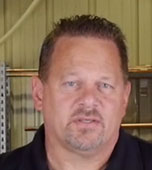Kansas 6 Hour Changes to the 2018 IPC
-
6 Hour Course
- 4.7 134 Reviews
- $89.00
This class covers the changes made during the 2015-2018 code review of the 2018 International Plumbing Code® (IPC). Each change in this class is presented in a “cut-and-paste” format with any deletions and additions clearly shown. Each change is then discussed for the reason it was made and how it impacts a licensee, based in part on the proceedings of the ICC Technical Committees.
The class takes the form of 12 lessons:
- Introduction to the International Plumbing Code (IPC)
- Reviews the Purposes, Scope, and Organization of the IPC as well as differences between Performance vs. Prescriptive Standards
- Changes to Chapters 1 and 2 of the 2018 IPC
- Introduces the New Commentary Text added at each Chapter Head and reviews the changes to Definitions for Accessible, Full-Open Valve, Press-Connect Joint, Registered Design Professional, Public Swimming Pool & Swimming Pool
- Changes to Chapter 3 General Regulations
- Reviews changes to 303.4 Third-Party Certification, 303.5 Third-Party Certification for Cast-Iron Pipe, 305.1 Corrosion Protection for Metallic Piping, 305.6 Protection Against Physical Damage, 308.5 Hanger Spacing Table, 308.6 Sway Bracing for Drainage Piping, and 308.10 Thermal Expansion Tank Support
- Changes to Chapter 4 Fixtures Faucets and Fixture Fittings
- Covers the Reorganization of Chapter 4, changes to Table 403.1 Gaming Area Plumbing Fixtures, and to Sections 403.1.2 Single User Toilet Facility Identification, 403.1.3 Distribution of Lavatories, 403.2 Facilities for Small Business Occupancies, 403.3 Location of Required Toilet Facilities, 405.3.1 & 405.3.5 Clearances for Plumbing Fixtures, 405.5 Pumped Waste Plumbing Fixtures, 409.1 Residential Dishwasher Standard & 409.4 Residential Dishwasher Waste Connection, 411.3 Emergency Shower Temperature Control, 412.7 Flow Limiting Device for Hot Water Discharge, 412.10 Head Shampoo Sinks & 423.3 Footbaths and Pedicure Baths
- Changes to Chapter 5 Water Heaters
- Changes to 502.1 Solar Water Heating, 504.6 Insert Fittings on T&P Valve Piping, and 504.7 Water Heater Drain Pan
- Changes to Chapter 6 Water Supply and Distribution
- Looks at revisions to Section 602 Water Required, 602.3.1 Standard for Water Well Construction, 605 Materials Joints and Connections, 607.3 Thermal Expansion Control Devices, 608 Backflow Protection, 608.12 NSF 61-Compliant Tanks, and 611.1 Point of Use Reverse Osmosis Systems
- Changes to Chapter 7 – Sanitary Drainage
- Key changes to 701.2 Connection to Sewer Systems, 701.8 Drainage Piping above Food Areas, 702.3 Polypropylene Piping, 703.4 Reuse of Buried Drain and Sewer Piping, 704 Grease-Laden Waste Piping Slope & Reduction of Pipe Size, 705.16.4 PVC to ABS Solvent Cement Joint, 709.3 GPM Drainage Flow to DFU Conversion, 712.3.2 Ejector Sump Cover Elevation, 712.4.2 Waste Ejector Solids Size, 713 Health Care Plumbing and 716 Pipe Bursting Replacement of Drains
- Changes to Chapters 8 through 11 Indirect/Special Waste; Vents; Traps, Interceptors and Separators; & Storm Drainage
- Covers Reorganization of Chapter 8, 802.4.3.1 Laundry Tub Connection, 918.8 Prohibited Installations for AAVs, 1003.3.2 Discharge of Disposers to Grease Interceptors, 1003.3.3 Additives to Grease Interceptors, Table 1102.4 Types of Piping for Storm Sewers, 1103.4 Cleanouts, 1106.5 Roof Drainage Scuppers, 1108.3 Sizing of Secondary Drains
- Changes to Chapters 13 through 15 Nonpotable & Subsurface Landscape Irrigation Systems & Referenced Standards
- A review of Green Plumbing Practices and IPC Chapter 13 Nonpotable Water Systems, including revisions to 1301.6 Components and Materials, 1301.9 Tank Location, Access to Tanks, and Draining, 1302.2 Water Sources for On-Site Reuse, 1302.7.2 Gray Water Storage Tanks, 1303.1.1 Rainwater for Fire Protection Systems, 1303.15.2 Testing First-Flush Diverter, and 1303.15.8&9 Rainwater Quality. Finishes with a look at Chapter 14 Subsurface Landscape Irrigation Systems and Chapter 15 Referenced Standards
- Common (But Avoidable) Plumbing Problems
- What creates and how to deal with Noise in the pipes, Leaks, Corrosion, and mistakes in Drainage Piping, Combustion Air, and Clearances and Handicapped Access
- Traps and Vents
- A survey of How Traps Work and What Can Go Wrong followed by Design Considerations for Venting Systems
- Customer-Created Problems
- What to look for and What Can Be Done when encountering DIY Plumbers, Drain and Plumbing Fixtures Abuse, People MacGyvering Frozen Pipes, and Customers Ignoring Plumbing Problems
Show Course ID: 1
- Course ID(s): 2025-007
- Approved By: Kansas PHCC
Instructor Bio

Randy Drake is a licensed, master plumber with over 32 years' experience in the industry. He founded a plumbing business in 1993 which he successfully sold in 2013. He currently works for a plumbing company based in Traverse City, Michigan.

